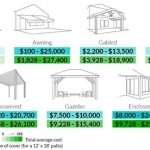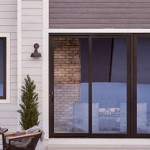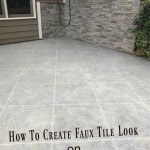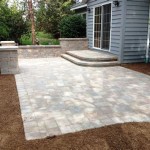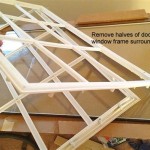Sunrooms and Patio Enclosures: Enhancing Living Spaces
Sunrooms and patio enclosures represent significant investments in residential properties, offering enhanced living spaces that bridge the gap between indoor comfort and outdoor enjoyment. These structures provide protection from the elements while allowing homeowners to maximize their connection with the natural environment. Understanding the various types, materials, and benefits associated with sunrooms and patio enclosures is crucial for making informed decisions regarding home improvement projects.
The terms “sunroom” and “patio enclosure” are often used interchangeably, but subtle differences exist. Generally, a sunroom is a fully enclosed structure, often with glass walls and a solid roof, intended for year-round use. Patio enclosures, on the other hand, may be less structurally robust, potentially featuring screens or temporary panels, designed primarily for seasonal use. However, the specific definitions can vary depending on regional norms and architectural styles.
Types of Sunrooms
Sunrooms can be categorized into various types based on their design, construction, and intended use. The most common types include:
Three-Season Sunrooms: These sunrooms are designed for use during spring, summer, and fall. They typically feature single-pane glass and are not equipped with robust insulation systems, limiting their usability during extreme temperature fluctuations. Three-season sunrooms are often a more cost-effective option compared to four-season sunrooms and provide a comfortable space for enjoying the outdoors without exposure to insects, rain, or intense sunlight.
Four-Season Sunrooms: These sunrooms are engineered for year-round use, offering a comfortable environment regardless of external weather conditions. They incorporate energy-efficient glass, insulated walls, and often include heating and cooling systems. Four-season sunrooms are essentially extensions of the home, offering a seamless transition between indoor and outdoor living spaces. They often require building permits and must comply with local building codes, similar to any other permanent addition to the house.
Conservatories: Conservatories are characterized by their predominantly glass construction, often featuring a glass roof and walls. Historically, they were used for cultivating plants that required controlled environments. Modern conservatories maintain this aesthetic while incorporating features that enhance comfort and energy efficiency. They can serve as elegant spaces for relaxation, entertainment, or even dining, offering an abundance of natural light and panoramic views of the surrounding landscape.
Screened-In Porches: While not technically sunrooms, screened-in porches provide a cost-effective alternative for homeowners seeking protection from insects and light breezes. They typically consist of a roofed structure with screens enclosing the perimeter. Screened-in porches offer limited protection from harsh weather conditions but can significantly enhance the usability of an outdoor space during warmer months. They are generally less expensive to construct than sunrooms and require fewer permits.
Materials Used in Sunroom and Patio Enclosure Construction
The choice of materials significantly impacts the durability, aesthetics, and energy efficiency of sunrooms and patio enclosures. Common materials include:
Aluminum: Aluminum is a popular choice for framing due to its strength, durability, and resistance to corrosion. It is lightweight, easy to work with, and requires minimal maintenance. Aluminum frames can be powder-coated in various colors to match the existing architecture of the house. However, aluminum is a good conductor of heat and cold, which can affect the energy efficiency of the sunroom unless thermal breaks are incorporated into the design.
Vinyl: Vinyl is another common material for framing, known for its low cost and low maintenance requirements. Vinyl frames are resistant to moisture, rot, and insects. They offer good insulation properties, contributing to energy efficiency. However, vinyl frames may not be as strong as aluminum or wood, and their color options may be more limited. Vinyl is also susceptible to expansion and contraction with temperature changes, which can lead to warping or cracking over time if not properly installed.
Wood: Wood frames offer a classic aesthetic and excellent insulation properties. Wood can be stained or painted to match the existing trim and siding of the house. However, wood requires regular maintenance to prevent rot, insect infestation, and weathering. Wood frames are also more expensive than aluminum or vinyl frames. Certain types of wood, such as cedar or redwood, are naturally more resistant to decay and insects and are often preferred for sunroom construction.
Glass: The type of glass used in sunrooms and patio enclosures significantly affects their energy efficiency and comfort. Options include single-pane glass, double-pane glass, and low-emissivity (low-E) glass. Double-pane glass provides better insulation than single-pane glass, reducing heat transfer and improving energy efficiency. Low-E glass is coated with a thin, transparent film that reflects infrared radiation, further reducing heat gain in the summer and heat loss in the winter. Tinted glass can also be used to reduce glare and solar heat gain.
Screening: For screened-in porches and some patio enclosures, various types of screening materials are available, including fiberglass, aluminum, and stainless steel. Fiberglass screening is the most common and affordable option. Aluminum screening is more durable and resistant to damage. Stainless steel screening is the most durable but also the most expensive. The choice of screening material depends on the desired level of visibility, durability, and insect protection.
Benefits of Sunrooms and Patio Enclosures
Sunrooms and patio enclosures offer a multitude of benefits that enhance the value and enjoyment of residential properties. These benefits include:
Expanded Living Space: Sunrooms and patio enclosures create additional living space that can be used for various purposes, such as a dining area, a reading room, a home office, or a playroom. They provide a comfortable and versatile space for relaxing, entertaining, or pursuing hobbies. This expansion of living space can significantly enhance the functionality and appeal of the home.
Increased Property Value: Adding a sunroom or patio enclosure can increase the property value of a home. Buyers often appreciate the added living space and the enhanced connection with the outdoors. The increase in property value depends on factors such as the size and quality of the sunroom, the location of the property, and the overall market conditions. However, a well-designed and constructed sunroom is generally considered a worthwhile investment.
Improved Energy Efficiency: Sunrooms and patio enclosures can improve the energy efficiency of a home by acting as a buffer zone between the interior and the exterior. They can reduce heat loss in the winter and heat gain in the summer, lowering energy bills and improving overall comfort. The energy efficiency of a sunroom depends on the type of glass used, the insulation of the walls and roof, and the efficiency of the heating and cooling systems.
Enhanced Natural Light: Sunrooms and patio enclosures allow natural light to flood into the home, creating a brighter and more cheerful living environment. Natural light has been shown to improve mood, increase productivity, and reduce reliance on artificial lighting. The abundance of natural light in a sunroom can create a more inviting and comfortable living space.
Connection with the Outdoors: Sunrooms and patio enclosures provide a connection with the outdoors while protecting homeowners from the elements. They allow residents to enjoy the beauty of nature without being exposed to insects, rain, wind, or extreme temperatures. This connection with the outdoors can be particularly beneficial for those who live in urban areas or have limited access to green spaces.
Protection from Insects and Pests: One of the primary benefits of sunrooms and patio enclosures is the protection they provide from insects and pests. Screening and enclosed spaces prevent mosquitoes, flies, and other unwanted critters from entering the living area, creating a more comfortable and sanitary environment. This is especially valuable during warmer months when insect activity is at its peak.
Extended Seasonal Enjoyment: Sunrooms, particularly four-season models, extend the usability of outdoor living spaces well beyond the traditional spring and summer months. This allows homeowners to enjoy the beauty of their gardens and landscapes throughout the year, regardless of weather conditions. This extended seasonal enjoyment greatly enhances the value of the property and the quality of life for its residents.
In conclusion, sunrooms and patio enclosures represent versatile and valuable additions to residential properties. Their benefits extend beyond mere aesthetics, offering functional living spaces, increased property value, and improved energy efficiency. The selection of appropriate materials and designs is crucial for maximizing these benefits and creating a space that meets the specific needs and preferences of the homeowner. Careful consideration of factors such as climate, budget, and intended use is essential for a successful sunroom or patio enclosure project.

Patio Enclosures Sunrooms Custom Designed

Sunrooms Three Season Rooms Screen Patio Enclosures

Patio Enclosures Sunrooms Custom Designed

Sunrooms Screen Porches Patio Enclosure Designs In Ne Ohio

Sunrooms Three Season Rooms Screen Patio Enclosures

6 Benefits Of A Sunroom Or Patio Enclosure Zephyr Thomas

What Is The Difference Between A Sunroom And Patio Enclosure Valverax Llc

Sunroom 16 Patio Room Enclosures Designs

Sunrooms Screen Porches Patio Enclosure Designs In Ne Ohio

Patio Enclosures Covers Porch Made In Usa
Related Posts


